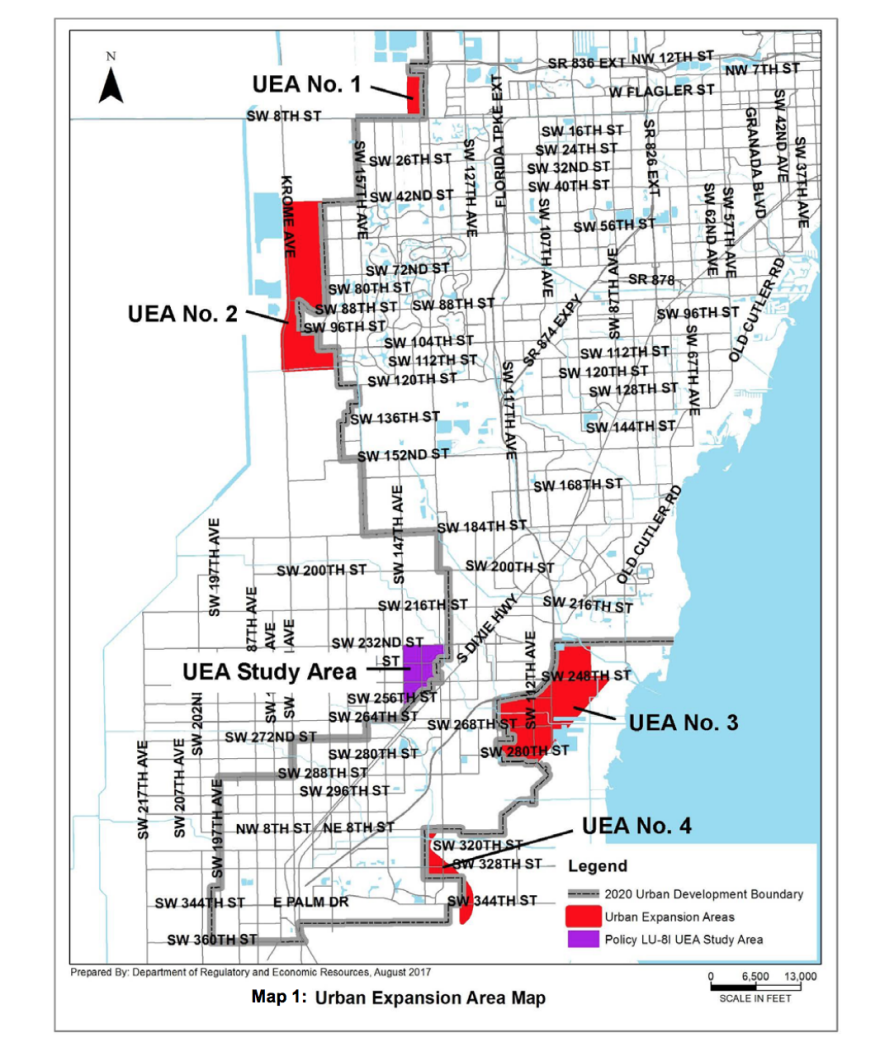A fight to expand future development onto farmland around the funky Redland region ended Thursday when Miami-Dade County commissioners agreed to exclude some of the last, and largest, swaths of open land from its master growth plan.
“We’ve heard from military. We’ve heard from farmers. We’ve heard from developers,” said Commissioner Danielle Levine Cava. “Balancing all those interests obviously is extremely difficult [but] these environmental protections... have to be seriously considered.”
The change had been simmering for months after a task force recommendation to shrink the areas approved for development was challenged by builders. That includes about 900 acres west of Kendall and north of the Redland, targeted for a highway expansion.
Four areas are designated in the county’s comprehensive growth plan for future development outside the urban development boundary. Miami-Dade County created the unique border in the 1980s to protect farmland and wetlands. Both help recharge the shallow aquifer that supplies much of South Florida’s drinking water.

But builders say space inside the boundary is running out and driving up the price of affordable single-family housing. To make up for the lost wetlands, builders wanted to expand the area for future development to Southwest 168th Street. The border had been Southwest 112th Street.
“The estimated growth in our county has increased over 10 percent in the last eight years. Yet the available land for development has continued to deplete,” Eric Valderrama, president of the Latin Builders Association, told commissioners.
County planners say studies of the supply show enough to last through 2039. State rules require counties to keep an inventory for at least 10 years.
The feud drew sharp lines in the Redland, where smaller farmers with five-acre lots increasingly outnumber larger operations. At two recent meetings before an agricultural advisory council, tempers flared over the changing make-up, with smaller farmers fighting to keep the area zoned for agriculture. An online petition started by orchid-grower Martin Motes drew 5,400 signatures.
But farmers with larger land holdings worry that restricting future development could drive down the price of land value and make it harder to get loans needed for planting seasons.
“We don't want to necessarily sell out now or in the next five or 10 years. But we don't want any further restrictions put on our property that would take away future options,” Phil Marraccini, a second-generation farmer and owner of Phil’s Berry Farm, told commissioners.
He complained that the urban development boundary was haphazardly drawn, with apartment buildings now facing farms.
“The five-acre people are actually going to lose value in their property because nobody is going to want to build a nice house on five acres when the other side of the street has got 12 stories on it,” he said.
But grower Margie Pikarsky said property value isn’t the issue. It's protecting farmland.
“Notice my shirt?,” she said Thursday. "It says, ‘Food, brought to you by the men and women of agriculture.’ Not only do you need the men and women but you need the land to farm it on. This is the only open green space we have left in the county. You cannot farm as much as you might like to if you don’t have the land.”
In response to builders, commissioners agreed to conduct a study of the area to find more buildable land outside the boundary. But Laura Reynolds, who represents the Hold the Line Coalition, said the study should instead be looking for ways to protect wetlands and water supplies increasingly threatened by saltwater intrusion from sea rise. She also worried that the push to expand development coincided with county plans to extend the 836/Dolphin Expressway.
"It's the same people that were pushing the 836 to expand that whole area and open it up," she said. "You can't have it both ways. You can't spend a billion dollars to alleviate traffic and then say, 'Oh well, let's open up this area for development.'"
An earlier version of this story misstated Miami-Dade County Commissioner Danielle Levine Cava's name.






